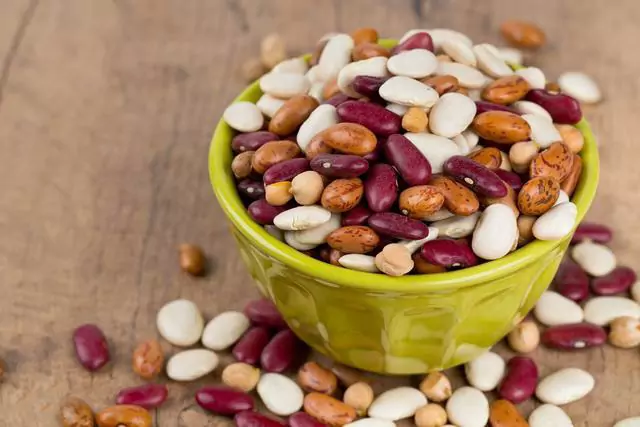Can dogs eat asparagus? How to cook asparagus for dogs
2022-06-17
I believe we have all eaten asparagus before, it is delicious and healthy, and when it is the time of the year to eat asparagus, many families with dogs will give their beloved pets asparagus. In the end, how can dogs eat asparagus?
1, people eat asparagus green stems for dogs are non-toxic, and appropriate to eat asparagus is possible.
2, asparagus can have potential effects when eaten in excess.
3, the dog's intestines are very similar to ours, so do not feed too much.
In addition, dogs can eat asparagus, but asparagus is a food that dogs have limited digestive capacity. We'd better not give too much. A dog's intestines are very different from humans, and the ability to digest food is much worse than humans. Therefore, many of the foods we eat are not suitable for dogs.
I. Cooking methods for feeding asparagus to dogs
With its crunchy texture and rich nutrition, asparagus is a food that is often found on people's dinner tables. If you have your own dog, can you give your dog asparagus? Can dogs eat asparagus?
Dogs are allowed to eat asparagus. Although dogs can eat asparagus, owners must not feed their dog's fried asparagus to prevent them from having difficulty digesting it. Feeding asparagus must be cooked in water, feed your dog a portion of the asparagus stems can be, and must be fed in moderation.
First of all, the rich nutrition of asparagus is also very good for dogs. Properly feeding asparagus can promote digestion and absorption in dogs, which is good for the stomach and intestines.
Secondly, dogs' intestines do not digest human food very well, so owners must not feed their dog's fried asparagus to avoid excessive oil and salt that can affect their digestion and absorption, which can easily lead to vomiting and other situations.
Again, when feeding asparagus, it is recommended that the owner cook it in water and cut it. Be sure to feed in moderation, not in excess for a long time, so as not to affect the dog's gastrointestinal digestion.
Finally, pesticides attached to asparagus are very toxic to dogs, so owners must wash them carefully and avoid accidentally eating raw asparagus to avoid poisoning.
Proper asparagus feeding can enrich the dog's diet and can also supplement the dog's nutritional needs. However, it must be fed in small amounts in moderation, and the daily feeding of dog food remains the main focus.
II. Dog Recipes
Beef and Asparagus Rolls
Ingredients.
1. a box of sliced beef (hot pot meat can also be used) 2. 10-15 asparagus
Method.
1. Preheat the oven for 10 minutes (refer to the upper heat at 180 degrees, lower heat at 150 degrees)
2. To be thoroughly de-iced and spread out the raw beef slices.
3. Cut the washed asparagus into the same width as the beef slices.
4. Roll up the asparagus with the beef slices.
5. Beef asparagus roll practice is not simple and fast, there is time to do fresh food for dogs so that your precious dog is happier and loves you more oh.
The consumption of human food has been reported to cause illness and even death in dogs, which has led pet owners to question the safety of various foods, including asparagus. As I wrote in a previous article, the most dangerous human foods for dogs are chocolate, grapes, raisins, and peanut butter.
The answer is: of course, you can eat it! Many dogs love the unique taste and texture of asparagus and enjoy it as a healthy snack. It can also serve as a great low-calorie treat for overweight dogs. However, because asparagus is expensive, it is not an everyday snack for pets.
Asparagus is a perennial flowering plant with young shoots that can be grown as a vegetable, often used as an appetizer or side dish. The plant can grow to 4-5 feet tall and has a sturdy trunk and feathery fern-like needle-like leaves.
It can be green or white in color. Green asparagus is popular all over the world and its typical growing season is from the end of April to the end of June. White asparagus is usually more tender and is the result of covering the shoots in the soil during its growth process, which turns them white. During the growing process, they are not exposed to sunlight and the shoots remain white. Both types of asparagus are safe for dogs.
For centuries, asparagus has been a delicacy, known for its diuretic and aphrodisiac properties. Asparagus originally grew in Europe and was brought to North America in the mid-1700s.
Asparagus has a unique flavor and can be eaten raw or cooked. It is usually poached, steamed, roasted, microwaved, saut茅ed, pickled, or brined. It can be a side dish, an appetizer, or a salad topping.

Three, when you feed your dog asparagus, keep in mind the following possible dangers:
1. Gastrointestinal upset can occur in dogs that are sensitive to condiments or butter. Many recipes for asparagus suggest serving it with white sauce, hollandaise sauce, melted butter, or olive oil. However, too much oil, fat, or condiments can cause gastrointestinal distress or inflammation in some pets.
2. If your dog eats large amounts of asparagus or woody or stem-like parts, there is a risk of choking. This is more common in small dogs but can happen to any animal. Some dogs are not good at "chewing" their food, which increases the risk of choking.
Potential contaminants on asparagus such as pesticides, fertilizers, and E. coli or listeria can also cause illness in dogs.
4. Asparagus leaves have been reported to be toxic to dogs, causing vomiting, diarrhea, and abdominal pain.
5. Although not dangerous, eating asparagus can change the smell of urine in dogs and *** unpleasant odors (which can also happen in people). According to research, about 30 to 50 percent of people (and an unknown percentage of dogs) have an autosomal gene in their bodies that causes a high-sulfur compound called asparagine***. The digestion of asparagine acid causes a very distinctive and often unpleasant odor in the urine of affected individuals. This urine is often referred to as "asparagus urine" and the odor it produces can cause problems for small dogs who do not like to play at home or for older dogs who are incontinent.
It's important to understand that just because your dog occasionally eats a small piece of asparagus doesn't mean it's safe to give them the rest of your appetizer, salad, or meal. For example, salads containing asparagus may also contain toxic ingredients such as onions, garlic, or even raisins.
Please note: Any food can cause gastrointestinal distress in dogs. What does not bother one dog may make another dog sick.
The safest and healthiest way to feed asparagus to dogs is to cut it into small pieces and cook or cut it fresh. Make sure the stems are thoroughly washed to remove pesticides, fertilizers, and potential contaminants.
Cooked asparagus is a healthy choice and will be softer to chew when unseasoned and steamed. Asparagus that contains too much butter or seasoning, on the other hand, can cause gastrointestinal distress in some dogs. If your dog develops any signs of illness after eating asparagus, call your veterinarian or the nearest veterinary emergency clinic immediately.
Fourth, dogs can also eat these vegetables:
Cauliflower:
Cauliflower is a great source of vitamin C and contains vitamins K and B6, folic acid, and choline. Also rich in phytonutrients and antioxidants, it is also a good source of soluble fiber, which aids in digestion.
Another benefit of this vegetable is that it cleans your dog's teeth and can also reduce the risk of many diseases, including inflammation.
Lettuce.
All types of lettuce are good for dogs. Dark, leafy lettuce is nutritious and high in water content. Don't let your dog eat lettuce every day, though, because it can cause diarrhea. Make sure lettuce is cut into small pieces for serving.
Cucumber:
Rich in phytonutrients, silica, vitamins A, B1, B6, C & D, folic acid, calcium, magnesium, and potassium, cucumbers are a delicious and nutritious treat.
If your dog has bad breath, the phytochemicals in cucumbers will kill the bacteria in their mouths. Cucumbers are also full of water, and enzymes and low in calories, making them the perfect snack for hot summer days.
Spinach:
If your dog has inflammation and cardiovascular problems, you should give him spinach as part of a balanced diet.
Puppies should also consume it because the calcium it contains is great for supporting bone structure. In fact, spinach is rich in iron, fiber, potassium, and vitamins K, A, and B6, which all dogs can benefit from.
Was this article helpful to you?
Other links in this article
Comments

Is a dog's mouth cleaner than a human's? Dogs' mouths need regular cleaning

Can dogs eat beans? Do dogs eat beans for health?

Can dogs eat lemons? Fruits that dogs should not eat more of

Do dogs have nightmares? Are dogs' dreams similar to humans'?

Can dogs eat raw beef? The benefits and drawbacks of beef for dogs

Is raw meat good for dogs? Can dogs eat raw chicken?

Can dogs eat pomegranates?

Can dogs eat ham?Can all types of ham hocks be eaten?

How to give a dog a bath

Can dogs eat kimchi?








